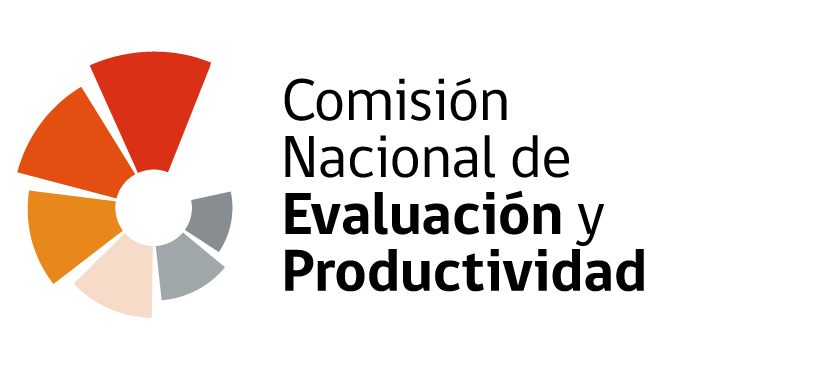
30 Oct CNEP creates a georeferenced map that visualizes fixed internet coverage and finds that 21,600 km of optical fiber is still needed to provide high-speed connectivity to all households.
The National Commission for Evaluation and Productivity (CNEP) developed the optical fiber connectivity map, part of the study “Productivity in the telecommunications sector.” It contains information that allows publicly identifying the layout of optical fiber in Chile, georeferencing the precise location of those areas, municipalities, blocks, and households that do not have the technological feasibility to connect to the Internet by gathering information from different operators.
This section, which is the only one lacking optical fiber coverage (last mile), represents around 5.6 million people who still need coverage of one of the technologies that, according to evidence, provides the highest speed in internet connection.
Despite Chile having one of the world’s best internet access capacities, data from the CASEN survey (2017) indicates that there are 1.5 million people who still need to have a paid connection, whether it be fixed broadband, mobile, or data plans. The main reason is the need for more resources.
In addition, Chile has one of the most expensive fixed broadband connections among OECD countries.
Monday, October 30, 2023.
While nearly 5.6 million people in Chile still need the feasibility of optical fiber to connect to the Internet, 1 in 4 households do not have Internet access, mainly due to a lack of resources. These figures reflect the magnitude of the digital divide in Chile in terms of coverage and access.
CNEP’s analysis specifies that at the local level, the digital divide: the contrast between those who use, have access to and have quality service of optical fiber coverage and those who do not, is mainly due to the type of use given to the Internet, where a lack of digital skills has a significant impact, unequal quality across the territory, lack of access in low-income areas, and the absence of optical fiber coverage for 5.6 million people.
Recently, the CNEP provided details of the digital divide facing Chile, according to two of the four variables analyzed in the study “Productivity in the Telecommunications Sector: Usage and Quality:” coverage and access.
5.6 million people in Chile have no optical fiber coverage
The CNEP’s analysis shows that the total deployment of optical fiber is 62,000 km. 21,600 km is necessary to connect the 2.2 million households in the country that currently do not have this technology.
There is a broad consensus regarding the need for a connectivity map that serves as a basis for designing and prioritizing telecommunications public policies. SUBTEL has some information and is in the process of creating such a tool. Still, it is currently unknown which households have connectivity and where optical fiber networks still need to be deployed since the available data comes from projects in which only the private sector participates. However, they contain information regarding the number of customers served with this technology, excluding information related to the network deployment. In contrast, data collected from private investments with state support consider it.
In light of this situation, highlighted in the 2022 Government Program Evaluation (EPG), which states “for the evaluated period, no geographically detailed modeling and quantification of the digital divide is evident,” the CNEP is considering the need to evaluate alternatives to strengthen the information that would feed into a connectivity map.
Unique map available to the public
In which specific place are all these households, beyond the region and/or municipality? At a high population density area, that would encourage investment? Is coverage essential in that area for training programs, telecommuting, or achieving better education? Is it a high vulnerability sector? Are there students and/or workers left out of coverage?
The CNEP seeks to clarify some of these issues by creating a georeferenced map, which identifies the sectors, and blocks in all regions and/or municipalities of Chile, that to date, do not have the feasibility of optical fiber to connect to the Internet.
The map, now publicly available on the institutional website www.cnep.cl, reveals the reality of each region. It identifies that the Metropolitan, Valparaíso, and Biobío regions face the most significant challenges, where an extension of 4,200, 3,000, and 2,500 kilometers, respectively, would still be needed to cover. In other words, while there are 616,000 households without optical fiber coverage in the Metropolitan region, the figure reaches 406,000 in Valparaíso and 226,000 in Biobío.
Additionally, CNEP estimates reveal that the regions with the least coverage concerning the total required to cover the last mile are Magallanes (63%), Los Lagos (51%), Tarapacá (48%), and Aysén (47%).
An institution with urgent challenges
When addressing optical fiber coverage in Chile and the existing gap, the CNEP describes and analyzes how the current institutionality operates, identifying findings that anticipate the axes for some recommendations.
In this regard, the Telecommunications Development Fund (FDT) is a financial instrument of the Government of Chile that aims to promote increased telecommunications service coverage in rural or low-income urban areas. For its operation, it has the Telecommunications Development Council (CDT), defined by law as a decision-making body, and the technical support of SUBTEL.
The CNEP warns that the work of the CDT has consisted, among other things, of commenting on and approving the project portfolio presented by the GFDT, once they already have an allocated budget. While this has not limited the flow of projects (from 1994 to the present, the FDT has processed at least 50), it suggests a close involvement of the CDT in the definition of initiatives.
To strengthen the role of the CDT, the CNEP proposes that, within the project portfolio development process, the CDT may comment on initiatives before they are included in the budget request rather than after, as currently happens.
On the other hand, the CNEP indicates that there is no available information that allows evaluation of the efficiency of the FDT deployment model. Data compiled for this study shows that since 2007, 40% of the contests have been declared deserted, and the median number of participants has been one company per project.
Considering the situation described, the CNEP analyzes evaluating the current deployment model to identify whether, due to the complexity of everyday challenges, it may be necessary to expand the available range. Additionally, the CNEP recommends publicizing information concerning the characteristics of awarded projects, such as the subsidy rate and amount, coverage, and implementation deadlines.
In Chile, 1 in 4 households requires internet access, mainly due to a need for more resources
Affordability of the Internet, which refers to the economic capacity of individuals and communities to access the respective services, has different variables that determine it, such as the costs associated with the connection, the purchasing power of the population, the existence of policies and regulations that promote competition, and subsidy programs, which influence the different levels of access that a particular group may or may not have.
Figures from the CASEN survey (2017) show that 75% of households have some form of internet access, which means that nearly 1.5 million have no Internet connection. In other words, 1 in 4 homes had no paid access to fixed broadband, mobile, or data plans. Of these, about 65% stated that they were interested in contracting it, with cost being the most predominant barrier. This impediment increases in households with minors.
According to international literature, the acquisition of broadband services is a relevant factor that drives social and economic well-being, as high-speed, quality internet access has a significant impact on the social, economic, and educational development of individuals and communities.
In this regard, global organizations (Alliance for Affordable Internet and Broadband Commission) have set a goal of providing access to broadband internet is at most 2% of the per capita GDP of countries. The purpose of this target is to ensure that internet access is affordable for everyone, regardless of geographic location, socioeconomic status, or any other barrier.
In the case of Chile, compliance with this goal is asymmetrical, as it shows different realities in mobile and fixed broadband. While the cost of the representative mobile data plan is USD 6.99, equivalent to 0.6% of per capita GDP, in the middle of OECD countries, in line with the United Kingdom and better than the United States, the cost of the fixed broadband plan is 2.5% of per capita GDP (USD 29), a relatively high value compared to the country’s income level.
Chile has one of the most expensive fixed connections among OECD countries, ranking worse than Costa Rica (1.8%) and Mexico (2.4%). In turn, it belongs to the 4 OECD countries with an affordability ratio (payment capacity) higher than the 2% target proposed by ITU and UNESCO.
However, this situation has nuances when the income of households from different socioeconomic strata is analyzed. In this regard, for mobile connections, the affordability goal still needs to be met in 40% of households with lower income, and for fixed connections, the threshold reaches 60%.
As detailed by the World Bank (2022), the delicate situation regarding broadband affordability in Chile is similar to the rest of the countries in the region. Indeed, high costs are one of the significant obstacles to achieving widespread broadband access in the population.
In this context, the CNEP suggests the convenience of developing financing plans to support vulnerable populations, such as generating demand subsidies, a measure successfully used worldwide (USA, Australia, Spain, among others).
In Chile, there is a recent boost in this area. As part of the current discussion of the Public Internet Service Bill, a subsidy model for more vulnerable users is considered but has yet to be finalized.
In this study, the CNEP presents the first public exercise where the approximate economic cost of a demand subsidy is estimated in line with the current parliamentary processing scheme.
In this regard, and considering a universal broadband subsidy scheme, this would imply an annual cost between MMMCLP 290 and MMMCLP 822, equivalent to 0.1% and 0.3% of GDP, respectively.
Given the heavy fiscal burden that implementing a subsidy like the one described would entail, lower cost estimates are also presented based on a subsidy that prioritizes more vulnerable groups. In this sense, resources could decrease by up to 95.5%, reaching MMMCLP 13, depending on the prioritized group and the expected participation rate.
The last part of the “Productivity in the Telecommunications Sector” study, which will be released in November, addresses Chile’s situation regarding the radio frequency spectrum, focusing on the opportunities for advancing toward a more efficient use of this resource.



